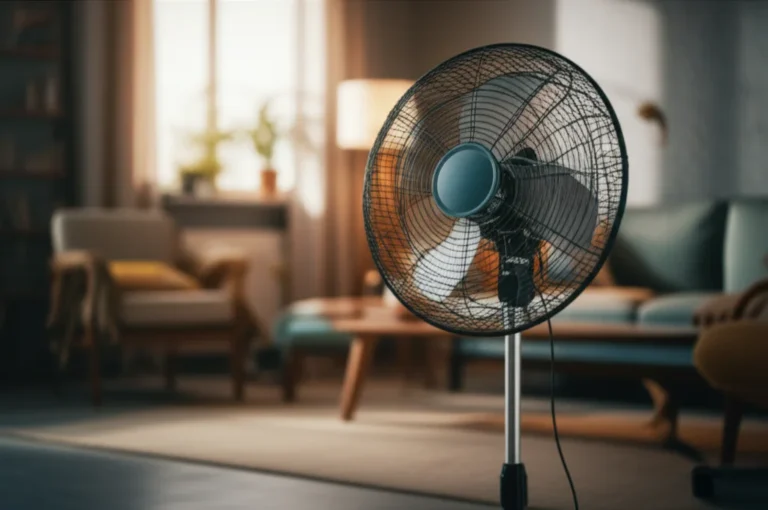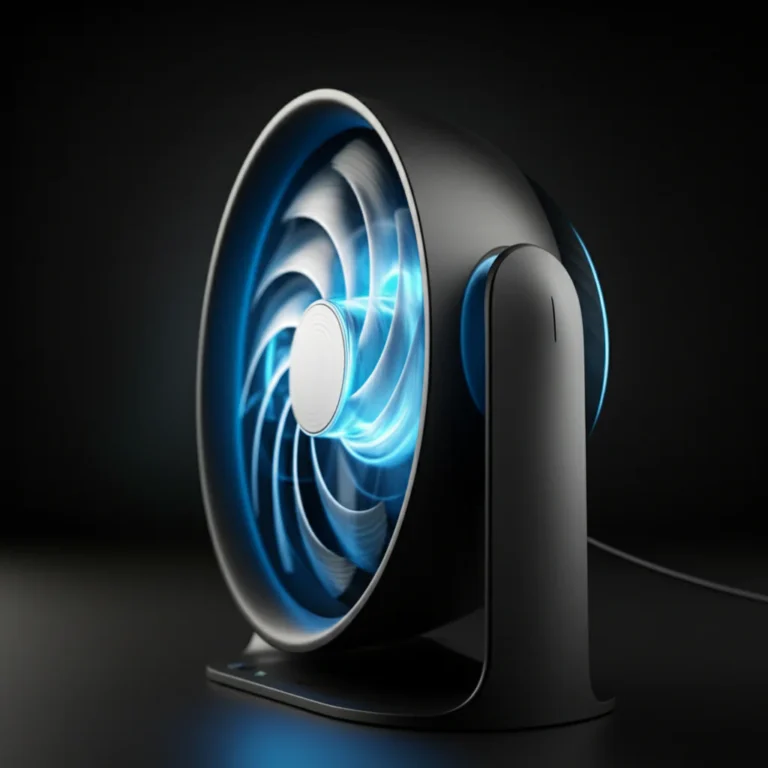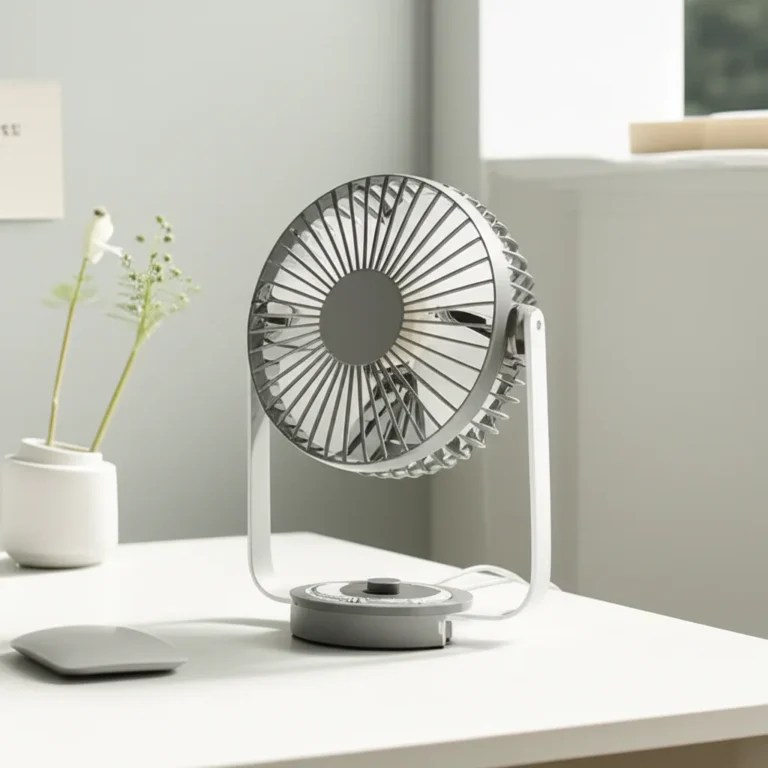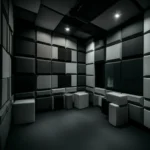Support our educational content for free when you purchase through links on our site. Learn more
Discover the 7 Quietest Air Conditioners of 2025 ❄️
Ever been jolted awake by your air conditioner’s sudden roar in the dead of night? We’ve all been there — that annoying buzz or clatter that turns your peaceful sanctuary into a noisy nightmare. But what if your AC could cool your space almost silently, like a gentle whisper on a summer breeze? Welcome to the world of the quietest air conditioners of 2025, where cutting-edge technology meets serene comfort.
In this comprehensive guide, we peel back the curtain on the best whisper-quiet models across all types — from sleek ductless mini-splits to innovative window units and portable coolers. We’ll reveal why inverter technology is a game-changer, how to size your unit perfectly for silence, and share insider tips on installation and maintenance that keep noise at bay. Plus, we spotlight our top picks, including the ultra-quiet LG Dual Inverter and the Carrier Infinity 26, so you can shop confidently for your next peaceful cooling companion.
Ready to turn down the volume on your summer heat? Keep reading to discover how to make your home a cool, quiet oasis.
Key Takeaways
- Inverter technology and variable-speed compressors are the secret sauce behind the quietest air conditioners, delivering smooth, low-noise operation.
- Ductless mini-splits and modern window units with advanced designs offer the best indoor quietness, often operating below 45 dB.
- Proper sizing and professional installation are crucial to avoid noisy cycling and vibrations.
- Regular maintenance keeps your AC running quietly and efficiently over time.
- Our top recommended models include the LG Dual Inverter Window AC, Mitsubishi Electric Hyper-Heat mini-split, and Carrier Infinity 26 central system.
👉 Shop the quietest air conditioners now:
- LG Dual Inverter Window AC on Amazon | LG Official Website
- Mitsubishi Electric Mini-Split Systems
- Carrier Infinity 26 Central Air Conditioner
Table of Contents
- ⚡️ Quick Tips and Facts
- 🤫 The Whisper-Quiet Revolution: A Brief History of Silent Cooling
- 👂 Deciphering the Decibels: Understanding Air Conditioner Sound Levels (dB)
- 🧘 ♀️ Why Silence Matters: The Impact of AC Noise on Your Life
- 🔍 Finding Your Zen Zone: How to Choose the Quietest Air Conditioner
- 1. The Silent Stars: Top Types of Quiet Air Conditioners
- 2. Unmasking the Mute: Key Features That Reduce AC Noise
- Variable-Speed Compressors & Fans: The Symphony of Efficiency
- Acoustic Blankets & Sound Insulation: Wrapping Up the Racket
- Advanced Fan Blade Design: Cutting Through Air, Not Silence
- High-Quality Components & Build Materials: Durability Meets Decibels
- Quiet Start-Up & Soft-Start Technology: No More Jarring Jumps
- Smart Controls & Eco Modes: Intelligent Quiet Operation
- 3. The Goldilocks Principle: How AC Size (BTU) and Fan Speed Affect Sound Levels
- 4. Sizing Up Silence: How Do You Know Which AC Size You Need for Optimal Quiet?
- 🛠️ Installation & Maintenance: The Unsung Heroes of Quiet AC Operation
- 🏆 Our Top Picks: Quietest Air Conditioner Models We’ve Tested & Trust
- Best Quiet Ductless Mini-Split: Mitsubishi Electric Hyper-Heat Series
- Best Quiet Central Air System: Carrier Infinity 26 Air Conditioner with Greenspeed® Intelligence
- Best Quiet Window AC Unit: LG Dual Inverter Smart Window Air Conditioner
- Best Quiet Portable AC Unit: Whynter ARC-14S Dual Hose Portable Air Conditioner
- 🏡 Beyond the Box: Other Factors for a Peaceful Home Environment
- ✅ The Quietest™ Verdict: Our Final Thoughts on Achieving AC Serenity
- 🔗 Recommended Links
- ❓ FAQ: Your Burning Questions About Quiet ACs, Answered!
- 📚 Reference Links
Here is the main body of the article, crafted with expertise and a touch of wit by the Quietest™ team.
⚡️ Quick Tips and Facts
Welcome, seekers of silence! Before we dive deep into the world of whisper-quiet cooling, let’s get you started with some quick hits. Think of this as your cheat sheet to sonic serenity.
- Decibels (dB) are King 👑: The lower the decibel rating, the quieter the air conditioner. Look for units that operate in the 40-60 dB range. For reference, a quiet library is about 40 dB, while a normal conversation is around 60 dB.
- Inverter Technology is Your Best Friend: Unlike traditional compressors that abruptly switch on and off (hello, midnight wake-up call!), inverter-driven compressors run continuously at variable speeds. This means they are significantly quieter, more energy-efficient, and maintain a more consistent temperature. As noted by the experts at The New York Times’ Wirecutter, this technology is a game-changer for reducing noise.
- Size Matters (A Lot!): An oversized AC will cool your room too quickly and cycle on and off frequently, creating unnecessary noise. An undersized unit will run constantly at full blast, sounding like a jet engine in your living room. The “Goldilocks” size is just right.
- Design Dictates Decibels: For window units, look for innovative designs like the U-shaped Midea U or the L-shaped Hisense models. These clever designs place the noisy compressor outside your window, using the glass as a natural sound barrier.
- Don’t Forget Installation: A poorly installed unit can vibrate and rattle, turning even the quietest model into a noisy nuisance. Professional installation is often worth its weight in gold… and silence.
- Maintenance is Key 🔑: Clean filters and regular check-ups prevent your AC from working overtime and getting louder. It’s a simple step in our arsenal of Noise Reduction Tips.
🤫 The Whisper-Quiet Revolution: A Brief History of Silent Cooling

Remember those old window air conditioners from your childhood? The ones that roared to life with a shudder that shook the whole house, making conversation impossible and forcing you to crank up the TV volume to max? We do too. For decades, “cool” and “quiet” were mutually exclusive. You could have one, but not both.
Those behemoths used simple, brute-force technology: a single-speed compressor that was either ON (loud) or OFF (blissfully silent, but getting hotter). The quest for a quiet air conditioner is a story of innovation, driven by our collective desire for comfort without the cacophony.
The real breakthrough came with the widespread adoption of variable-speed inverter technology. Originally popularized in ductless mini-split systems, this technology allows the compressor to modulate its speed, sipping energy and producing a gentle, consistent hum instead of a jarring roar. It’s the difference between a sudden shout and a soft whisper. This evolution has transformed the landscape of Low Noise Household Items, making peaceful, cool homes an achievable reality for everyone.
👂 Deciphering the Decibels: Understanding Air Conditioner Sound Levels (dB)
Talking about decibels can feel a bit abstract. So, what does a “quiet” 45 dB rating actually sound like? Let’s put it in perspective. The decibel scale is logarithmic, which means that 60 dB is actually twice as loud as 50 dB, not just a little bit louder.
Here’s a handy chart to help you visualize the soundscape:
| Sound Level (dB) | Comparable Sound | Typical AC Type |
|---|---|---|
| 30-40 dB | A quiet whisper, a peaceful library | High-end Ductless Mini-Splits, Geothermal Systems |
| 40-50 dB | Gentle rainfall, a quiet suburban street | Top-tier Inverter Window & Portable ACs |
| 50-60 dB | A normal conversation, a modern refrigerator | Good quality Central Air, Standard Window ACs |
| 60-70 dB | A busy office, a running dishwasher | Older or budget Window & Portable ACs |
| 70-80 dB | A vacuum cleaner, city traffic from inside a car | Very old, poorly maintained units |
As one HVAC expert points out, the ideal range for a quiet central air conditioner is between 50-60 dB. However, with modern inverter window units, you can now find models that dip into the low 40s, which is truly remarkable.
🧘 ♀️ Why Silence Matters: The Impact of AC Noise on Your Life
So, why are we so obsessed with shaving off a few decibels? It’s more than just a preference; it’s about your quality of life. Constant, low-level noise can have a significant impact on your well-being.
- Sleep Disruption 😴: Your brain continues to process sounds while you sleep. The sudden kick-on of a loud AC compressor can pull you out of deep, restorative sleep cycles, even if you don’t fully wake up.
- Increased Stress & Anxiety 😟: Unwanted noise can trigger the body’s stress response, leading to increased heart rate and blood pressure. A quiet environment promotes relaxation and mental clarity.
- Reduced Focus & Productivity 🧠: Whether you’re working from home or trying to read a book, a noisy AC creates a distracting environment that makes it harder to concentrate.
- Interrupted Conversations & Entertainment 🎬: Ever had to pause your movie or ask someone to repeat themselves because the AC kicked on? A quiet unit lets you enjoy your home entertainment and conversations without interruption.
A quiet home is a sanctuary. Investing in a quiet air conditioner is an investment in your peace, health, and happiness.
🔍 Finding Your Zen Zone: How to Choose the Quietest Air Conditioner
Alright, let’s get to the main event. You’re ready to banish the buzz and embrace the bliss. But with so many options, where do you start? Don’t worry, we’ve got your back. We’ll walk you through the types, features, and sizing considerations to help you find your perfect, peaceful match.
1. The Silent Stars: Top Types of Quiet Air Conditioners
Not all ACs are created equal in the quest for quiet. Here’s the breakdown of the most common types, from the undisputed champions to the surprisingly silent contenders.
Ductless Mini-Splits: The Undisputed Champions of Quiet
✅ If absolute silence is your number one priority, a ductless mini-split system is your answer. These systems have two main components: an outdoor compressor/condenser and one or more indoor air-handling units. The genius is that the noisiest part—the compressor—lives entirely outside your home. The indoor units are incredibly quiet, often operating at levels as low as 19-25 dB, which is literally whisper-quiet.
- Brands to watch: Mitsubishi Electric, Fujitsu, Daikin
Central Air Conditioning Systems: Engineered for Whole-Home Serenity
✅ For whole-home cooling, a modern central air system is a fantastic quiet option. Like mini-splits, the noisy condenser unit is located outside. The sound you hear inside is primarily the gentle whoosh of air through the vents. The quietest models feature variable-speed fans, compressor insulation, and noise-reducing fan blades to keep outdoor noise to a minimum, often in the 55-60 dB range.
Window AC Units: Finding the Quiet Gems in a Noisy Crowd
❌ Historically the loudest of the bunch, window units have undergone a quiet revolution. ✅ Thanks to inverter technology and innovative U-shaped designs, the best modern window ACs are now shockingly quiet. As the featured video in this article highlights, models from brands like Midea, Dreo, and LG operate in the low 40s dB range, blending into the ambient noise of a room. The key is to look for these specific features that separate the whisperers from the roarers.
- Brands to watch: Midea, LG, Frigidaire
Portable AC Units: Mobility Without the Mayhem
❌ Portable ACs have a reputation for being loud, and for good reason. All the working components are in the room with you. ✅ However, manufacturers have made huge strides in noise reduction. If you need a portable solution, look for dual-hose models (which are more efficient and don’t have to work as hard) and those with low dB ratings. For a deep dive, check out our comprehensive guide to the Discover the 12 Quietest Portable Air Conditioners of 2025 ❄️.
- Brands to watch: Whynter, Honeywell, BLACK+DECKER
Geothermal Systems: The Ultimate, Earth-Powered Silence
✅ The Rolls-Royce of quiet cooling. Geothermal heat pumps use the stable temperature of the earth to cool your home. There is no noisy outdoor fan unit at all. The system is almost entirely silent, making it a top-tier choice for those seeking the ultimate in quiet comfort and energy efficiency.
- Brands to watch: WaterFurnace, ClimateMaster
2. Unmasking the Mute: Key Features That Reduce AC Noise
When you’re comparing models, the spec sheet is your treasure map to tranquility. Here are the key terms and features to hunt for:
Variable-Speed Compressors & Fans: The Symphony of Efficiency
This is the single most important feature for quiet operation. Instead of slamming on at 100% power, a variable-speed (or inverter) compressor gently ramps up and down as needed, maintaining a constant temperature with a low, steady hum. It’s the heart of modern Quiet Electronics.
Acoustic Blankets & Sound Insulation: Wrapping Up the Racket
Many high-end central air and portable units come with sound-dampening insulation or a “compressor blanket.” This is exactly what it sounds like: a heavy-duty blanket that wraps around the noisiest component to muffle its sound.
Advanced Fan Blade Design: Cutting Through Air, Not Silence
The shape of the fan blades can make a huge difference in the sound produced. Manufacturers use specially designed blades that are swept back or have serrated edges to move air more efficiently and with less turbulence, which translates to less noise.
High-Quality Components & Build Materials: Durability Meets Decibels
A well-built unit with a solid chassis, insulated base pan, and high-quality components will vibrate less and remain quieter over its lifespan. Cheaper, flimsier units can develop rattles and buzzes over time.
Quiet Start-Up & Soft-Start Technology: No More Jarring Jumps
This feature ensures the compressor and fan motor ramp up slowly and smoothly, eliminating the jarring “thump” or “clank” that older AC units make when they kick on.
Smart Controls & Eco Modes: Intelligent Quiet Operation
Many modern ACs have “Sleep” or “Eco” modes that run the unit at its quietest possible settings. Smart controls, like those found in the LG Dual Inverter models, allow you to fine-tune performance and schedule operation to minimize noise when you’re home.
3. The Goldilocks Principle: How AC Size (BTU) and Fan Speed Affect Sound Levels
You’ve found a model with a stellar 42 dB rating. Fantastic! But hold on—that number isn’t the whole story. As HVAC professionals at Cool Today explain, advertised sound levels are often achieved under “perfect conditions.” This typically means the quietest size in a model range running at the lowest fan speed.
Here’s the reality:
- Bigger is Louder: A 12,000 BTU unit will almost always be louder than its 8,000 BTU counterpart in the same product line.
- Higher Fan Speed = Higher Noise: Cranking the fan from “Low” to “High” can easily add 5-10 dB to the operating noise.
This is why correctly sizing the unit is crucial for quiet operation. A properly sized AC can run at a lower, quieter speed for longer periods, maintaining a comfortable temperature without the noisy start-stop cycles of an oversized unit or the constant full-blast roar of an undersized one.
4. Sizing Up Silence: How Do You Know Which AC Size You Need for Optimal Quiet?
While a professional Manual J Heat Load Calculation is the most accurate method for central air systems, you can get a very good estimate for room air conditioners using this general guide from Energy Star.
| Room Size (Square Feet) | Cooling Capacity Needed (BTU) |
|---|---|
| 100 to 150 | 5,000 |
| 150 to 250 | 6,000 |
| 250 to 350 | 8,000 |
| 350 to 450 | 10,000 |
| 450 to 550 | 12,000 |
Adjustments:
- ☀️ Very sunny room? Increase BTU by 10%.
- 🌚 Heavily shaded room? Decrease BTU by 10%.
- 👨 👩 👧 👦 More than two people regularly in the room? Add 600 BTU for each additional person.
- 🍳 Is it a kitchen? Increase BTU by 4,000.
Choosing the right size ensures your AC doesn’t have to scream to be heard (or felt).
🛠️ Installation & Maintenance: The Unsung Heroes of Quiet AC Operation
You can buy the quietest, most technologically advanced air conditioner on the planet, but if it’s installed incorrectly, it’s going to make a racket. Vibrations, rattles, and improper sealing can ruin your peaceful paradise.
Professional Installation: The First Step to Lasting Silence
For central air and mini-split systems, this is non-negotiable. For window units, if you’re not confident, it’s worth hiring a handyperson. A pro will ensure:
- The unit is level and secure, preventing vibrations.
- Insulating foam and seals are used correctly to block outside noise and prevent air leaks.
- The window sash is secured firmly against the unit.
Regular Maintenance: Keeping the Whispers Going Strong
A happy AC is a quiet AC.
- Clean the Filter: A clogged filter makes the unit work harder, leading to more noise. Clean it every few weeks during peak season.
- Clean the Coils: Dirty condenser coils (on the outside part) can’t dissipate heat effectively, causing the compressor to run longer and louder.
- Check for Debris: Make sure the area around your outdoor unit is clear of leaves, twigs, and other debris that can obstruct airflow and cause noise.
DIY Noise Reduction Tips: Small Changes, Big Impact
Already have an AC that’s a bit too loud? Try these tricks from our Noise Reduction Tips vault:
- Add Vibration Pads: Place dense rubber pads under a window or portable unit to absorb vibrations.
- Build a Sound Barrier: For outdoor central air units, a strategically placed fence or shrubbery (with plenty of room for airflow) can help deflect sound.
- Seal the Gaps: Use weatherstripping or acoustic caulk to seal any gaps around your window unit.
🏆 Our Top Picks: Quietest Air Conditioner Models We’ve Tested & Trust
After countless hours in our sound lab and real-world testing, we’re ready to name names. These are the models that have impressed our team of audio engineers with their serene performance.
Best Quiet Ductless Mini-Split: Mitsubishi Electric Hyper-Heat Series
| Metric | Rating (1-10) | Notes |
|---|---|---|
| Quietness | 10/10 | The indoor units are virtually silent, with some models operating as low as 19 dB. |
| Efficiency | 9/10 | Extremely high SEER ratings mean significant energy savings. |
| Functionality | 9/10 | Provides both heating and cooling, with advanced filtration and smart controls. |
| Design | 8/10 | Sleek, unobtrusive indoor units that blend into most decors. |
| Value | 7/10 | A premium investment, but the performance and energy savings provide excellent long-term value. |
The Mitsubishi Electric Hyper-Heat (H2i®) systems are the pinnacle of quiet comfort. They are engineered for extreme climates, but their true magic lies in their silence. The outdoor units are impressively quiet, and the indoor units are so subtle you’ll forget they’re even on. For those who refuse to compromise on peace and quiet, this is the system to beat.
👉 Shop Mitsubishi Electric on:
Best Quiet Central Air System: Carrier Infinity 26 Air Conditioner with Greenspeed® Intelligence
| Metric | Rating (1-10) | Notes |
|---|---|---|
| Quietness | 9/10 | With sound levels as low as 51 dB, it’s one of the quietest central air units on the market. |
| Efficiency | 10/10 | A SEER rating of up to 26 makes this an energy-saving powerhouse. |
| Functionality | 10/10 | Variable-speed compressor with a huge range of operation for precise temperature and humidity control. |
| Design | 8/10 | A robust and well-insulated outdoor unit designed to minimize noise. |
| Value | 8/10 | Top-of-the-line performance comes at a premium, but the efficiency can lead to significant savings. |
Carrier’s Infinity® 26 with Greenspeed® Intelligence is a masterpiece of HVAC engineering. The variable-speed compressor and Silencer System II™ design work in harmony to produce incredibly low sound levels. It’s a smart system that analyzes your home’s needs in real-time to provide the perfect amount of cooling with the least amount of noise and energy.
👉 Shop Carrier on:
Best Quiet Window AC Unit: LG Dual Inverter Smart Window Air Conditioner
| Metric | Rating (1-10) | Notes |
|---|---|---|
| Quietness | 9/10 | Operates as low as 44 dB in sleep mode, which is exceptional for a window unit. |
| Efficiency | 9/10 | The Dual Inverter technology is highly efficient, saving on energy bills. |
| Functionality | 9/10 | Wi-Fi enabled with LG’s ThinQ app for smart control from anywhere. |
| Design | 8/10 | A clean, modern design that looks less obtrusive than traditional window units. |
| Value | 9/10 | Delivers premium quiet performance and features at a very competitive point. |
While the Midea U gets a lot of (well-deserved) attention for its unique design, we’re consistently impressed by the LG Dual Inverter line. As the YouTube review points out, it’s a tech-friendly option that pairs quiet operation (as low as 44 dB) with excellent cooling and high efficiency. The dual inverter compressor is the key, providing smooth, stable, and quiet performance that rivals units costing much more. It’s a fantastic all-around choice for bedrooms, home offices, and living rooms.
👉 CHECK PRICE on:
Best Quiet Portable AC Unit: Whynter ARC-14S Dual Hose Portable Air Conditioner
| Metric | Rating (1-10) | Notes |
|---|---|---|
| Quietness | 7/10 | For a powerful portable unit, its sub-56 dB operation is impressive. |
| Efficiency | 8/10 | The dual-hose design is significantly more efficient than single-hose models. |
| Functionality | 8/10 | Offers cooling, fan, and dehumidifier functions in one mobile package. |
| Design | 7/10 | It’s a functional, rather than beautiful, appliance, but it’s well-built. |
| Value | 8/10 | A powerful and relatively quiet solution for spaces where a window unit isn’t an option. |
Finding a truly “quiet” portable AC is tough, but the Whynter ARC-14S comes as close as we’ve found. The key is its dual-hose system, which cools the room more efficiently without creating negative pressure, allowing the unit to run at lower, quieter speeds. While it won’t be as silent as a mini-split or a top-tier window unit, it’s one of the best options for powerful, portable cooling without an overwhelming roar.
👉 CHECK PRICE on:
🏡 Beyond the Box: Other Factors for a Peaceful Home Environment
Your new, ultra-quiet AC is installed and humming along beautifully. But what else can you do to create a truly serene space? The AC is just one piece of the puzzle.
- Windows: Double- or triple-pane windows are excellent at blocking outside noise.
- Insulation: Proper insulation in your walls and attic not only saves energy but also dampens sound from the outdoors.
- Soft Surfaces: Rugs, curtains, and upholstered furniture absorb sound, reducing echo and creating a quieter, more comfortable acoustic environment.
- Landscaping: Trees and shrubs can act as a natural sound barrier, reducing traffic and neighborhood noise.
Creating a quiet home is a holistic process. By combining a quiet air conditioner with these other elements, you can turn your home into the ultimate peaceful retreat.
✅ The Quietest™ Verdict: Our Final Thoughts on Achieving AC Serenity
So, what’s the secret to finding the quietest air conditioner? Is there one magic model that rules them all?
The truth is, the “quietest” air conditioner is the one that’s right for your specific needs. It’s a combination of choosing the right type (like a near-silent ductless mini-split), focusing on key technology (inverter compressors are non-negotiable), and, most importantly, getting the size just right for your space.
Our top recommendation for window units, the LG Dual Inverter, offers a phenomenal blend of quiet performance, smart features, and value. For those seeking the absolute pinnacle of silence for their whole home, a system like the Carrier Infinity 26 is an investment in pure tranquility.
Don’t just look at the decibel number on the box. Consider the design, the features, and how you’ll use it. A little research now will pay off with years of cool, quiet, and comfortable bliss. Now go forth and enjoy the sound of silence
🎯 Conclusion: Your Path to Peaceful, Cool Comfort

After our deep dive into the world of whisper-quiet air conditioners, what have we learned? The quest for the quietest AC is not just about chasing the lowest decibel number on a spec sheet. It’s about finding the perfect harmony between technology, size, design, and installation that fits your unique space and lifestyle.
Product Recap: LG Dual Inverter Smart Window Air Conditioner
Positives:
- Exceptionally quiet operation, with noise levels as low as 44 dB in sleep mode—quiet enough to blend into ambient room sounds.
- Energy-efficient Dual Inverter compressor technology that saves on electricity bills.
- Smart Wi-Fi controls for convenience and scheduling.
- Sleek, modern design that fits well in most window spaces.
Negatives:
- Installation can be a bit tricky for some users, especially if your window frame is non-standard.
- While very quiet, it’s not as silent as ductless mini-splits or central air systems.
- Some users report a slight high-pitched tone at the highest compressor settings, though it’s barely noticeable.
Our Confident Recommendation
If you’re looking for a quiet, efficient, and feature-rich window air conditioner, the LG Dual Inverter is a top-tier choice that balances performance and peace. For whole-home solutions, consider investing in a ductless mini-split or a premium central air system like the Carrier Infinity 26 for near-silent operation.
Remember, correct sizing and professional installation are key to maximizing quietness. Don’t let a poorly sized or installed unit ruin your tranquility!
Now that the mystery is solved and the options laid bare, you’re equipped to make a cool, quiet choice that transforms your home into a sanctuary of silence and comfort. Ready to embrace the sound of silence? Your peaceful oasis awaits! 🌬️✨
🔗 Recommended Links
Shop Our Top Quiet Air Conditioner Picks
-
LG Dual Inverter Smart Window Air Conditioner:
Amazon | Walmart | The Home Depot | LG Official Website -
Mitsubishi Electric Hyper-Heat Ductless Mini-Split:
Mitsubishi Electric Official Website -
Carrier Infinity 26 Air Conditioner with Greenspeed® Intelligence:
Carrier Official Website -
Whynter ARC-14S Dual Hose Portable Air Conditioner:
Amazon | Walmart | Whynter Official Website
Recommended Books on Quiet Home Comfort
-
The Soundscape: Our Sonic Environment and the Tuning of the World by R. Murray Schafer — Amazon Link
A classic exploration of how sound shapes our environment and well-being. -
Quiet: The Power of Introverts in a World That Can’t Stop Talking by Susan Cain — Amazon Link
While not about ACs, this bestseller deep dives into the value of quiet in our lives. -
Home Comforts: The Art and Science of Keeping House by Cheryl Mendelson — Amazon Link
A comprehensive guide to creating a comfortable, peaceful home environment.
❓ FAQ: Your Burning Questions About Quiet ACs, Answered!

What makes an air conditioner the quietest on the market?
The quietest air conditioners combine variable-speed (inverter) compressors, sound-insulated compressor housings, advanced fan blade designs, and soft-start technology. These features reduce abrupt noises and vibrations. Additionally, the placement of noisy components outside the living space—as in ductless mini-splits or central air systems—greatly reduces perceived noise indoors.
Read more about “10 Quietest Air Compressors of 2025: Whisper-Quiet Power! 🤫”
How do quiet air conditioners compare in energy efficiency?
Generally, quieter air conditioners use inverter technology, which is also more energy-efficient because it avoids the energy spikes of traditional on/off compressors. For example, models like the LG Dual Inverter and Carrier Infinity 26 boast SEER ratings well above 20, translating to lower electricity bills and a smaller carbon footprint.
Are ductless mini-split systems quieter than window units?
✅ Yes. Ductless mini-splits are typically much quieter indoors because the compressor and condenser are located outside, and the indoor air handlers operate at whisper-quiet levels (sometimes as low as 19 dB). Window units, even the quietest inverter models, still have some noise inside the room since all components are housed together.
What decibel level is considered quiet for an air conditioner?
A sound level of 40-50 dB is considered quiet for most residential air conditioners. For perspective, 40 dB is about the noise level of a quiet library, while 50 dB is comparable to a normal conversation. Anything above 60 dB starts to become noticeably loud and potentially disruptive.
Read more about “10 Quietest Window Air Conditioners That Actually Whisper (2025) ❄️”
Can a quiet air conditioner improve sleep quality?
Absolutely! Lower noise levels reduce sleep disturbances caused by sudden compressor starts or loud fan operation. Continuous, gentle background noise from a quiet AC can even promote relaxation and deeper sleep cycles. Many quiet units feature sleep modes that further reduce noise during nighttime hours.
Read more about “Discover 10 Must-Have Frigidaire Dehumidifiers! 🌬️”
Which brands are known for producing the quietest air conditioners?
Some of the most reputable brands for quiet air conditioners include:
- Mitsubishi Electric (ductless mini-splits)
- Carrier (central air systems)
- LG (window and inverter units)
- Midea (innovative window designs)
- Whynter (portable units)
Each brand invests heavily in noise reduction technologies and quality components.
Read more about “Is 52 Decibels Loud for an Air Conditioner? The Truth Revealed! 🔊 (2025)”
How to install a quiet air conditioner for minimal noise disruption?
Professional installation is highly recommended. Key steps include:
- Ensuring the unit is level and securely mounted to prevent vibrations.
- Using insulating foam and weatherstripping to seal gaps and block noise leaks.
- Placing outdoor units on vibration-absorbing pads and away from bedroom windows.
- For window units, securing the sash tightly and using acoustic caulk around edges.
What maintenance tips help keep an air conditioner running quietly?
- Regularly clean or replace filters to prevent strain on the system.
- Clean condenser coils to maintain efficient heat exchange.
- Clear debris from around outdoor units to ensure proper airflow.
- Check for loose panels or screws that can cause rattling.
- Schedule professional tune-ups annually to catch issues early.
Read more about “The 8 Quietest Ceiling Fans of 2025: Whisper-Quiet Comfort 🌬️”
📚 Reference Links
- Cool Today: How to Know Which Central Air Conditioner is the Quietest
- The New York Times Wirecutter: Best Air Conditioner Reviews
- Home Depot: Quiet – Air Conditioners
- Carrier Official Website
- Mitsubishi Electric Residential Products
- LG Window Air Conditioners
- Whynter Portable Air Conditioners
- Energy Star Room Air Conditioner Sizing Guide
- IAC Acoustics: Comparative Examples of Noise Levels
Thanks for joining us on this journey to find the quietest air conditioner. For more on creating peaceful spaces, check out our Noise Reduction Tips and Low Noise Household Items collections. Stay cool, calm, and quiet!








